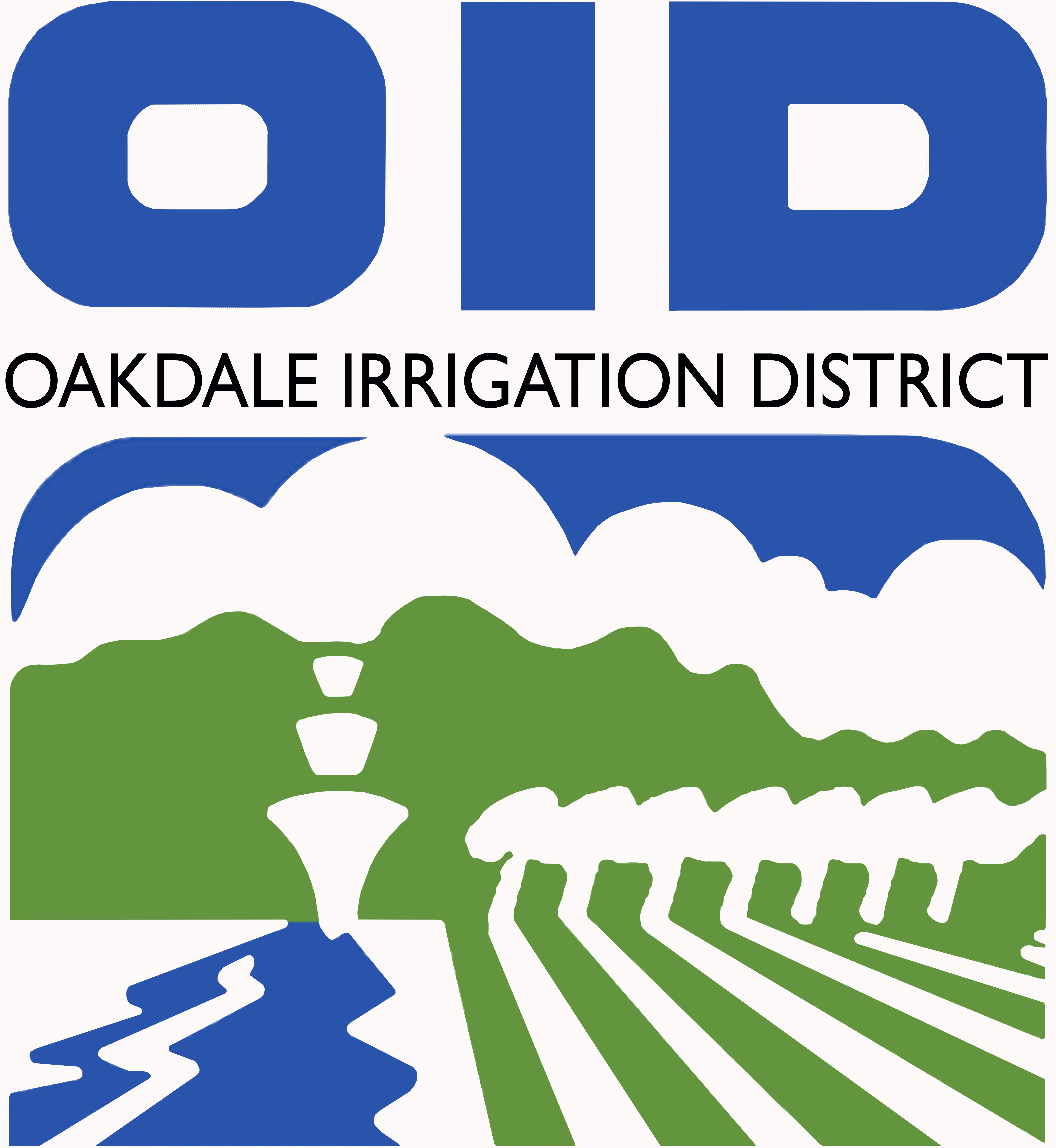History of OID
Profile of the District
The District was formed on November 1, 1909 as an irrigation district of the State of California formed pursuant to the provisions of Division 11 of the California Water Code (the “Act”) for the purpose of delivering irrigation water to the agricultural lands within its boundaries. Geographically, the District encompasses parts of Stanislaus and San Joaquin Counties, about 12 miles northeast of Modesto and 30 miles southeast of Stockton. Urban areas in the District include the cities of Oakdale and Valley Home located in Stanislaus County. The District has one blended component unit, the Oakdale Irrigation District Financing Corporation (“Financing Corporation”). The Financing Corporation is a nonprofit public benefit corporation created in 1988 for the purpose of aiding the financing of projects for the District.
Water to supply the District comes principally from the Stanislaus River under well-established adjudicated water rights but also from water reclamation and drainage recovery systems and pumping from deep wells. The District’s distribution systems include the Goodwin Diversion Dam on the Stanislaus River below the Tulloch Dam, at which point water is diverted into the District’s main canal systems.
Currently the District operates and maintains over 330 miles of laterals, pipelines, and tunnels, 25 deep wells, and 41 lift pumps to serve local customers. In general, the District’s facilities, system operations, political organization, and administration have not changed over the last decade. The District provides surface irrigation (raw) water to over 2,900 connections, in addition to supplying domestic water to over 700 customers. The District does not presently operate a domestic water treatment plant or provide municipal or industrial water.
The District in 1955 issued Tri-Dam revenue bonds to finance its one-half share of the costs of constructing the Tri-Dam Project on the Stanislaus River. The project consisted of building the Donnells, Beardsley, and Tulloch Dams and Reservoirs, together with associated hydro-electric plants. The Tri-Dam Project is managed by the District and South San Joaquin Irrigation District (“the Districts”) through a joint board of directors comprised of the board of directors of each district. Tri-Dam’s power generation was pursuant to the terms and provisions of a five-year Master Power Purchase and Sale Agreement (“Agreement”) between the Districts and SENA effective January 1, 2009. This agreement replaced a similar agreement with PG&E. However, effective January 1, 2014, the Districts entered into a new power purchase and sale agreement with the City of Santa Clara, California through its municipal electric utility, Silicon Valley Power. Under the agreement, the Districts agreed to sell the net electrical output and installed capacity of its power generating facilities to the City through December 31, 2023. Under the agreement, the Districts will receive a fixed contract price per megawatt hour (MWh) with scheduled increases ranging from 2.6% to 4.4% each year. Recent California legislation requires utilities to obtain required renewable energy in its generation portfolio. It is expected that demand for all renewable energy will increase in the foreseeable future.
In 1982, the District and the South San Joaquin Irrigation District entered into a joint exercise of powers agreement in order to form the Tri-Dam Power Authority (Authority) for the purposes of exercising common powers in constructing, owning, operating, and maintaining facilities for the generation of electric power. In 1984, the Authority issued $62 million in Sand Bar Project Hydroelectric Revenue Bonds. The bond proceeds were used to finance the construction of what is known as the Sand Bar Project, consisting of one hydroelectric turbine and generator installed in the vicinity of the Sand Bar Flat Diversion Dam, together with a related diversion facility, conveyance tunnel, transmission line, access roads, bridges, equipment, and other improvements. These Bonds were paid in full in 2017. All power generated by the Authority is delivered to PG&E under an agreement extended through 2016. The Authority entered into a new power purchase and sale agreement with the City of Santa Clara, California through its municipal electric utility, Silicon Valley Power, which begins after the current contract with Pacific Gas and Electric ends on December 31, 2016.
Governance
The District is governed by a 5-member Board of Directors who are elected by the residents of the District to staggered four-year terms. To facilitate matters, most business coming before the District’s Board is first considered by one of its committees. Each committee then reports and/or provides a recommendation to the full Board, which makes the final decision. There are seven standing committees that include Domestic Water, Finance, Personnel, Planning and Public Relations, San Joaquin Tributary Authorities, Tri-Dam Project, and Water/Engineering.
Day-to-day operations of the District are managed by the General Manager who is appointed and reports directly to the Board of Directors. Reporting to the General Manager are four departments: Engineering, Finance, Support Services, and Water Operations.
Land and Land Use
The District encompasses an area of approximately 80,900 acres, with an additional approximately 77,700 acres within its sphere of influence. Urban areas in the District include the cities of Oakdale and Valley Home located in Stanislaus County. Lands are relatively level, with elevations from near sea level at the west end of the District to 250 feet above sea level at the east end.
Approximately 9,400 acres in the District were not farmed in Fiscal Year 2014. Nevertheless, the District is presently considered to be nearly fully developed even though the total cropped acreage may vary from year-to-year depending on the amount of fallowed ground and/or newly annexed lands.
The District predicts that the cropping pattern will continue to evolve in future years, with irrigated pasture being converted to more profitable permanent crops.
Information from the Comprehensive Financial Annual Report for the Year Ending December 31, 2015


